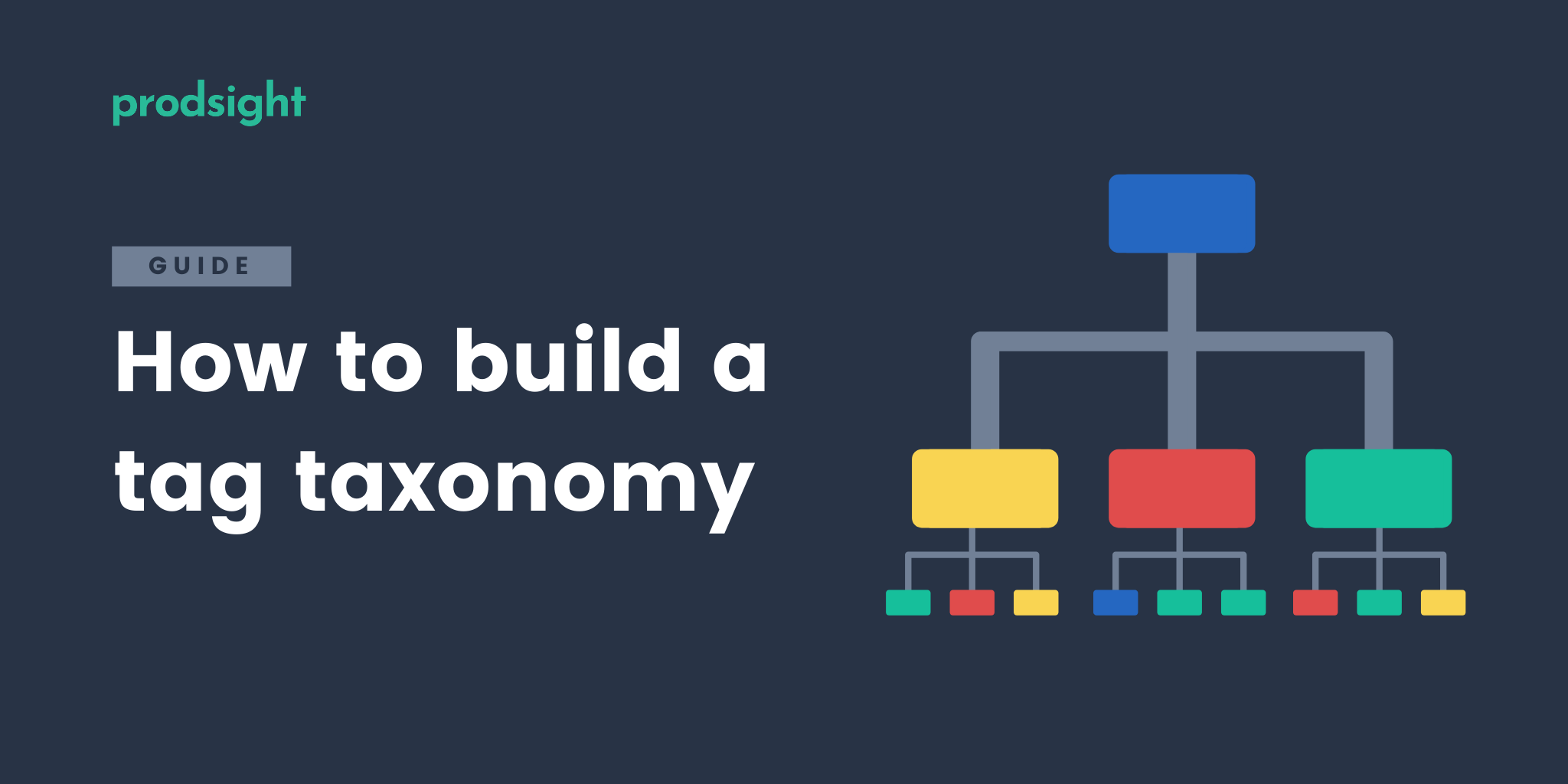
How to build a strong tag taxonomy to analyze customer feedback

Companies talk to customers every day via a wide range of channels from customer support, sales and research interviews to surveys, reviews and social media. Every customer interaction leaves a trail of valuable information. To understand the underlying themes around customer needs and wants, customer-centric organization analyze customer feedback by tagging it and producing reports.
Bringing order to your tags
Whether you are tagging your customer feedback manually or use an automated tagging tool, you will need to build a robust tag taxonomy to act as an overarching framework and help you organize and understand your tagged data.
Tagging without a tag taxonomy will have you end up with a long list of overlapping and redundant tags that are hard to apply, difficult to synthesize and draw insight from consistently. A bit of upfront planning can go a long way in ensuring that your tagging efforts pay off in the form of accurate reporting that you can rely on when making decisions around your customer experience.
What is a tag taxonomy?
Taxonomy is the practice and science of categorization based on discrete sets and finds its roots in the Greek language τάξις, taxis (meaning ‘order’, ‘arrangement’) and νόμος, nomos (‘law’ or ‘science’). In general, it refers to a categorization of things or concepts such as species of animals, food groups and plants.
In this post, we are going to talk specifically about building a tag taxonomy to help you break down and organize customer feedback into logical concepts to help people in your organization understand what matters to your customers the most.
Types of Tag Taxonomies
There are two popular types of tag taxonomies used for feedback analysis - flat and hierarchical.
Flat tag taxonomy
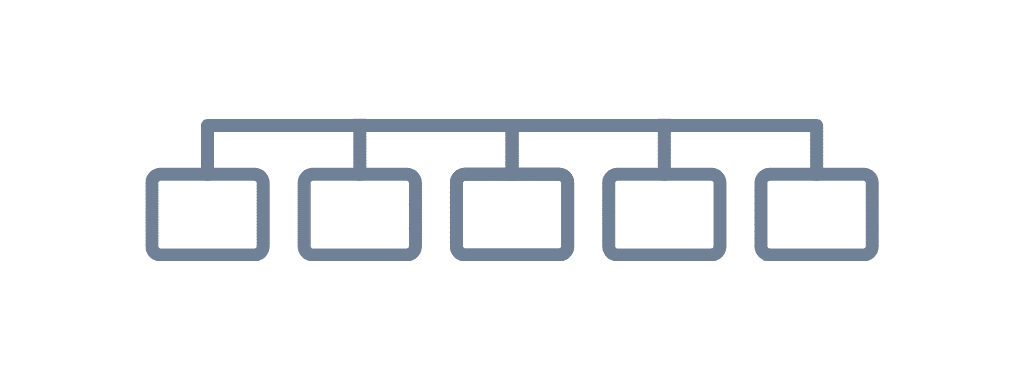
A flat taxonomy, also known as an unlayered taxonomy, is simply a list of items. A flat taxonomy has only high-level categories.
Tools such as Intercom and Survicate allow users to build flat tag taxonomies by applying one or more labels to a piece of feedback (message, survey, etc.).
Here is an example of a flat tag taxonomy:
- Billing query
- Feature request
- Complaint
- Refund request
- Cancellation
- Feedback
- Zapier Integration request
Pros:
- Easy to build the initial taxonomy
- Tags can be applied to feedback more consistently and accurately as there are fewer tags to choose from
- Great in situations where the data volume is relatively low
Cons:
- Difficult to compare tags as they can differ in their level of abstraction (“Billing query” is very broad while “Zapier Integration request” is very specific)
- Can become unwieldy when used with a large number of tags
- Difficult to expand without creating duplication or overlapping tags (ie. “Integrations” vs “Zapier Integration request”.
Hierarchical tag taxonomy

A hierarchical taxonomy allows a hierarchical arrangement of tags. Individual tags within the hierarchy are arranged in order of abstraction. Moving up the hierarchy means expanding the tag or concept. Moving down the hierarchy means refining the tag or concept.
Here is an example of a hierarchical tag taxonomy:
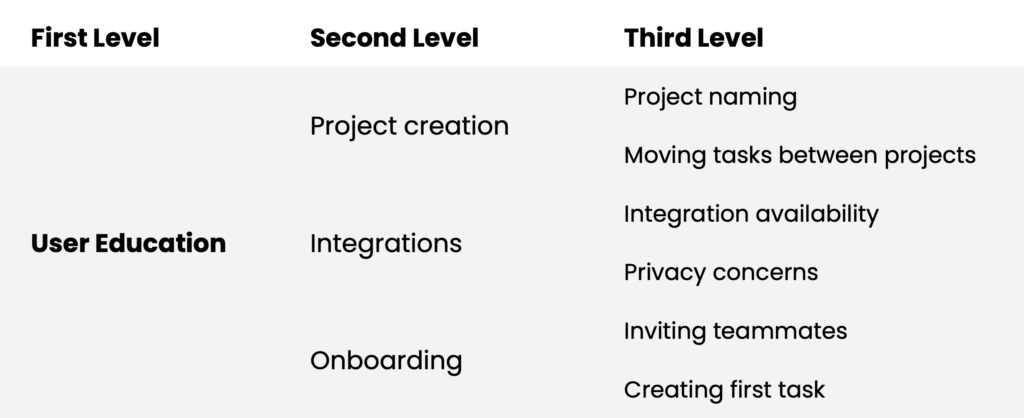
Pros:
- Offers a greater level of detail as more specific tags can be created
- Allows flexible reporting at each level of the hierarchy
- Easy to expand as new tags fall neatly within pre-existing categories and new categories can be created
Cons:
- It takes some deliberate planning to create a logical hierarchical structure
- It might be challenging to change and reorganize tags in a drastically different structure once the hierarchy is established
Which tag taxonomy should I choose?
Your choice of tag taxonomy will mainly come down to your data volume.
- If your customer feedback volume is low (hundreds of pieces per month), you might be better off sticking to a flat taxonomy and keeping your tag list short.
- If your customer feedback volume is high (thousands of pieces per month), then your best bet is to go with a hierarchical tag taxonomy and expand your list of tags for more detailed reporting.
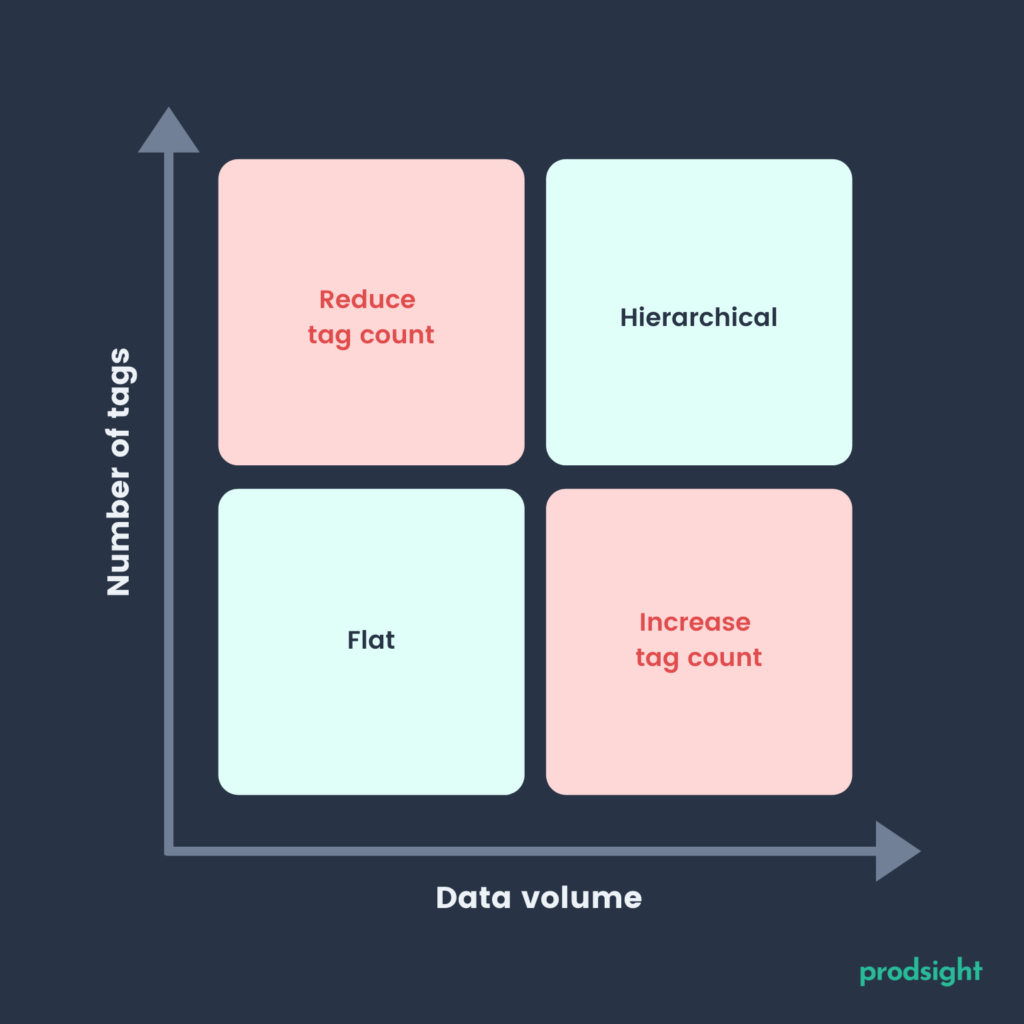
How to build your tag taxonomy?
First level tags
When building a tag taxonomy, it’s best to start by mapping out the high-level categories first. For your first level tags, think about the broad areas your customer feedback tends to fall into.
For a SaaS company, the top-level tags might look like this:
- User Education
- Technical Issues
- Usability Issues
- Feature Requests
- Billing
For an eCommerce company, the first level tags might look like this:
- Product Questions
- Delivery Queries
- Product Issues
- Product Requests
- Payments
If your data volume is low and you are only limited to a flat single-level tag taxonomy by your tool, I would recommend sticking with only the top-level tags. On the other hand, if you have a high volume, read on to learn how to build the second and third tier of your hierarchical tag taxonomy.
Second level tags
Now that we have defined our first level of the tag hierarchy, the next step is to break down each first level tag into more specific tags.
Taking the SaaS example again, a typical breakdown might look like this:
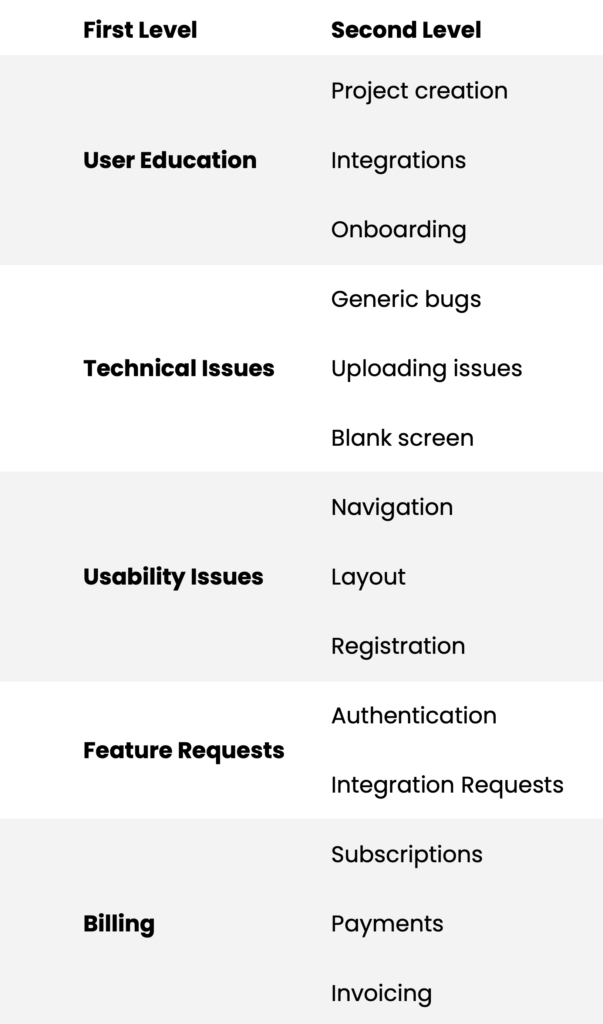
Third level tags
The first two tagging levels will already provide you with a lot of detail about the various topics discussed in your customer feedback. However, to get even more in-depth insights, you can then break-down each second level tag into more specific third level tags.
Continuing from the previous SaaS company example, here is an illustration of how the third level tag breakdown might look like.
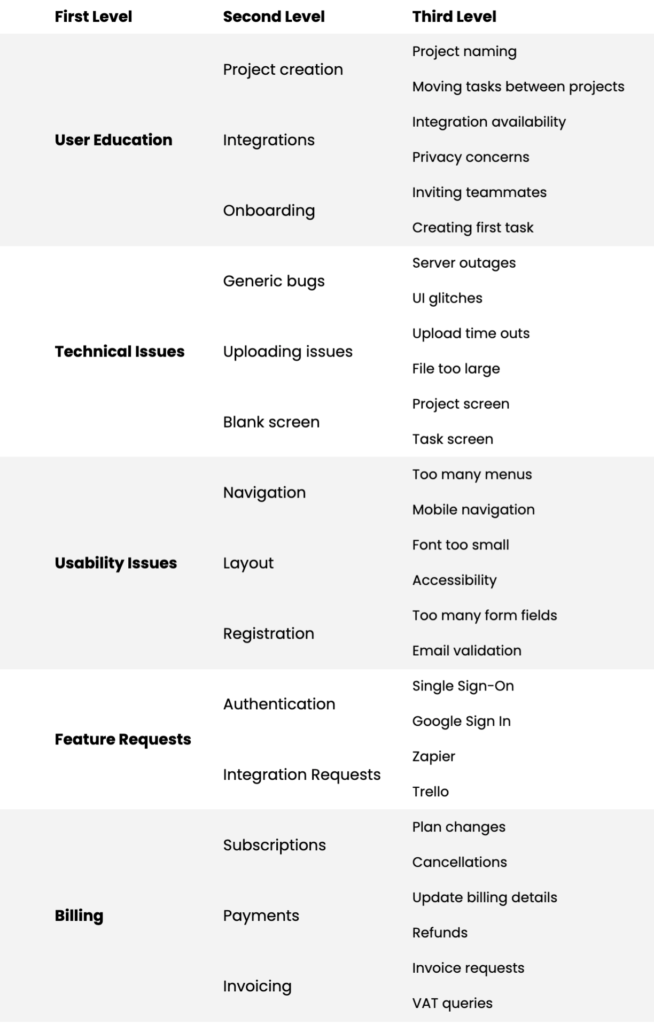
Manual vs automated tagging
In the early stages, when the customer feedback volume is relatively low, it can be relatively straightforward to manually tag incoming customer feedback based on a tight flat tag taxonomy.
However, as you scale, add more customer support agents and expand teams that need to learn from and act based on customer insights, the manual tagging process often breaks down.
We built Prodsight to help scaling teams stay on top of their customer feedback by completely automating the tagging process. We built the system from the ground up to support both flat and hierarchical taxonomies to suit the reporting needs of organizations at different stages of their journey.
Here is how Prodsight can help you make sense of your customer feedback:
- Aggregate all your customer feedback from Intercom, Zendesk, Freshdesk, Typeform, App Store, Trustpilot and many other tools.
- Automatically tag feedback based on the tagging taxonomy you define
- Help you easily maintain your tag taxonomy with retrospective tagging, topic suggestions and tag merging features.
Whether you are looking to improve your existing feedback tagging process or just starting from scratch, get in touch, and I’d be happy to help you set up your feedback tagging process.
